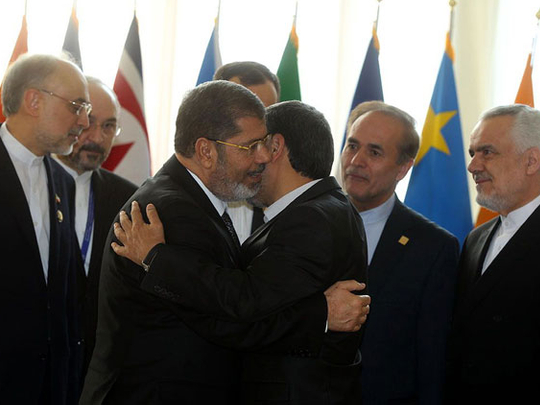
Who has not seen what looks like water on a highway on a hot summer’s day? Or a three-dimensional image that was actually a picture on a flat surface? The nature of illusion is that we mistake what we perceive to be real.
That is true whether an illusion is cognitive or political. Depending on how a particular event develops, it can lead us to formulate erroneous interpretations of what is actually happening.
Such perceptions are often mediated by ideas and previous experiences. And, as Robert Jervis argued in Perception and Misperception in International Politics, published during the Cold War, the illusions that we create have an enormous influence on decision-making — even becoming a fundamental cause of conflict.
To a certain extent, this is what has happened with analysis of the recent 16th Summit of the Non-Aligned Movement (NAM), held at the end of August in Tehran — the first time Iran has hosted the meeting. The summit took place against a background of scant progress in negotiations with Iran on its nuclear programme and growing pressure from Israel for the international community to establish a “trigger” — a line that the Islamic Republic must not cross.
Moreover, regional tensions heightened the perception of the NAM summit’s importance and that of its host. In the Middle East, only Iran and Hezbollah support Syrian President Bashar Al Assad’s regime in a civil war that is nearing the point of no-return and destabilising Lebanon and Jordan.
The NAM played an important role during the Cold War. Its vision was shaped by the recent independence struggles of many of its member countries and its agenda promoted national sovereignty, non-interference, a rebalancing of North-South relations and support for national liberation movements.
But the reality is that the united NAM of the past has changed. The Cold War’s bipolar governance structure and a subsequent period of American unilateralism — to which the non-aligned states attempted to act as a counterbalance — have given way to a much more complex and interdependent multi-polar world. While the US and Europe are still struggling to overcome a serious economic crisis, many NAM members, such as India, Chile and Singapore have maintained relative strong growth and form part of new global governance structures, such as the G-20.
Likewise, many of the problems that we now face — whether climate change, financial crisis, development challenges, terrorism or nuclear proliferation — reflect growing global interdependence. Managing them effectively obliges us to rethink the concept of sovereignty.
These changes have transformed not only the traditional structures of power, but also the leitmotif of NAM and the fate of its members. Globalisation has fuelled ever-widening disparities among its members — just compare Colombia with Afghanistan or Chile with Sudan — that make it difficult to transform sheer numbers into coherent influence.
The impact of the Tehran summit, and whom it may have benefitted, is not entirely clear. Iran certainly regarded the meeting as a propaganda opportunity, promising wide media coverage at a time when it was in the eye of a diplomatic hurricane. But the participants’ inability to reach a common position on their hosts’ nuclear programme or the violence in Syria — two of the fundamental questions that confronted the summit — obviously underscored Iran’s effort to demonstrate that despite facing severe economic and diplomatic sanctions, it remains an effective international player.
Indeed, United Nations Secretary-General, Ban Ki-moon, has criticised Iran for not assuring the world that it is not seeking nuclear arms at a time when the International Atomic Energy Agency published a new report suggesting that it is.
And, in a speech of great depth, Mohammad Mursi, the first Egyptian President to visit Iran since the Islamic Republic’s birth in 1979, firmly rejected the Syrian regime, as he did in a subsequent appearance before the Arab League as well. Moreover, Mursi urged Iran to join Egypt, Turkey and Saudi Arabia — all Sunni-majority countries — in pressing for political transition in Syria (a role that the Syrian opposition rejected before Iran could even say no).
In other words, reality betrayed the perception that Iran sought to create in hosting the NAM Summit. Instead, Mursi’s speech provided the occasion’s most memorable moment. And Iran’s nuclear quest remains a reality that must not be ignored during the next key three years, when the Islamic Republic will lead NAM while itself remaining one of the most serious problems on the international agenda.
— Project Syndicate, 2012
Javier Solana, former secretary-general of Nato and EU high representative for the Common Foreign and Security Policy, is Distinguished Senior Fellow in Foreign Policy at the Brookings Institution and President of the ESADE Centre for Global Economy and Geopolitics.










